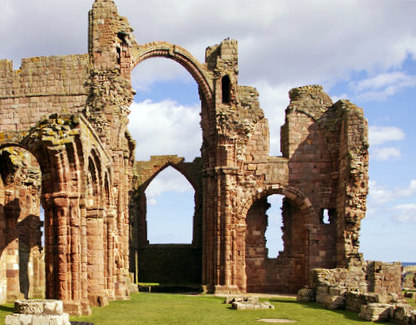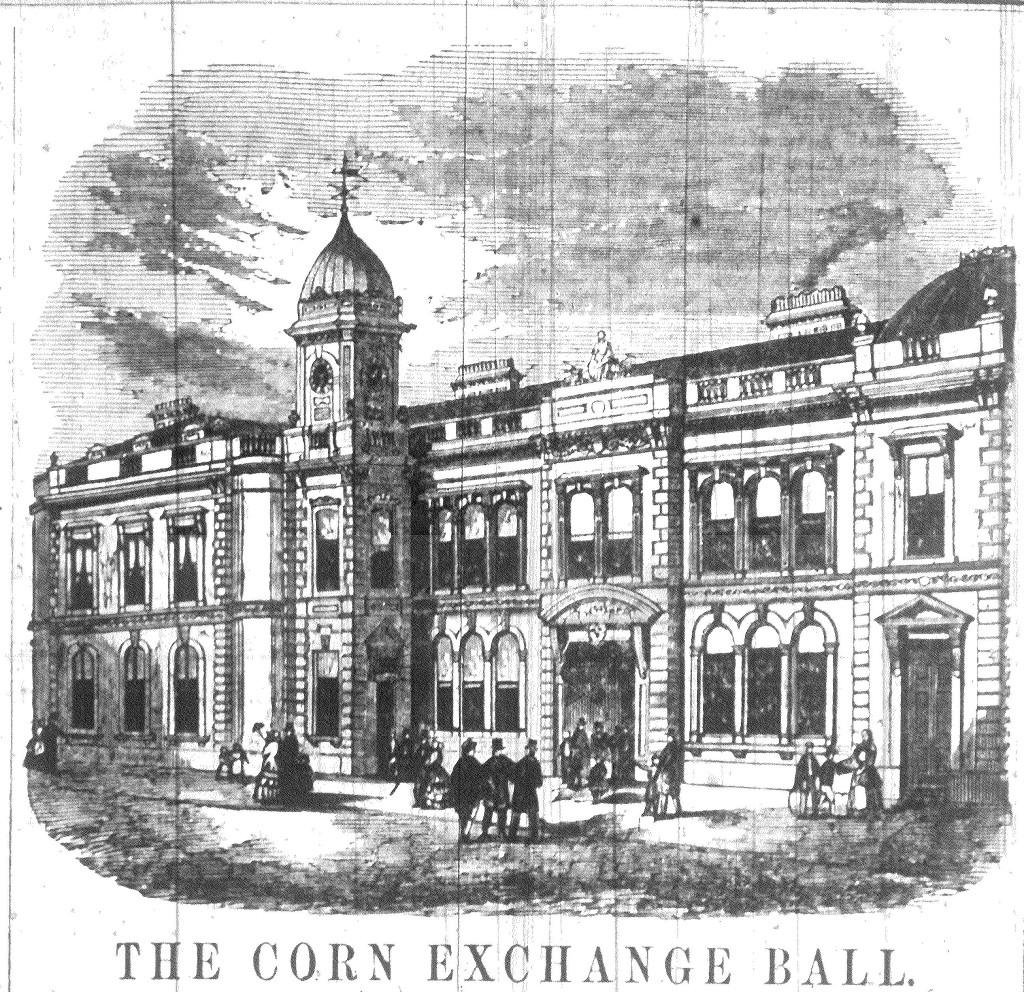
THE CLOSING OF THE SCHOOLS
Berwick Elementary Schools have been closed as follows during the last fifteen months:-
October 22nd, 1918 to January 6th, 1919 – Closed for influenza
Mid – February, 1919 to 17th March – Closed for influenza. Bell Tower Infant School closed for another fortnight.
April 14th to May 12th – Tweedmouth Infants’ School closed for measles.
September, 1919 – Extra week’s holiday for the conclusion of the war.
December 10th, onwards – Closed for scarlet fever.
We don’t wish to suggest that anyone is to blame for this, but when to these periods are added the regular holidays and the absences from school due to individual cases of illness, it will be seen that – to put it at its lowest – the town is paying away a great deal of money for nothing. We suggest that the public and the teachers should consider whether some means cannot be found of avoiding this serious loss.
HOLY ISLAND
WHERE ST. CUTHBERT LIVED- ON FAR LINDISFARNE
The “Sphere” of December 20th contains the following interesting article:- “Lindisfarne Castle, on Holy Island, is one of the many historic places in the market to be sold, with all its furniture and pictures. It was thoroughly restored a few years ago, after a long period of neglect and is now a most attractive and interesting property. It is situated on a basaltic stone forming the promontory of the little harbour of Holy Island where the small fishing boats gather for their trade in crabs, lobsters and periwinkles. The island has a romantic history, having been the seat of earliest Christianity in the north of England. In 635 A.D., Aidan, the Irish monk from Iona, came to Holy Island at the request of King Oswald to teach the heathen Northerners the precepts of Christianity. He established himself on Holy Island, probably appreciating its similarity to his old home of Iona, and also its nearness to Bamburgh, the Royal seat of King Oswald. Men flocked to hear him preach and his success was tremendous, 15,000 being baptized in seven days. The most famous of his successors was the austere St. Cuthbert, who retired after two years of holding the Bishopric, to his hermit’s cell on one of the Farne Islands. When he died, shortly afterwards, from the severity of his self-inflicted penance, he was buried beside the altar on Holy Island. But his body was not permitted to remain in peace, and was constantly shifted during troubled period of the Middlle Ages, till it now rests in Durham Cathedral. His body was hurriedly removed from Lindisfarne when the marauding Danes attacked the Island in the ninth century, and the Monks had to flee, carrying the body of their revered saint in a wooden coffin.

Ref: BRO 1865-12
“The Danes robbed and destroyed the Church and Monastery, leaving the place in utter desolation. It was not till 200 years later that a new Priory was erected, whose remains are to be seen today. The foundations were laid in 1093, the architect being a monk from Durham, who designed a beautiful cruciform Norman church, built of a warm red sandstone. The church remained almost unaltered till the Dissolution of the Monastries brought the inevitable destruction, but the ruins of today are eloquent of the dignity of the 12th century Benedictine Church. The centre tower stood till the middle of the 18th century, only a delicate slender arch over the transept crossing remaining to remind us of what had once stood there. The western end, with its 2 towers and fine Norman doorway, is in course of careful restoration. The cylindrical columns of the nave are of the sturdy Norman type, signalised by sunken zigzag mouldings cut across the piers. The ground plan of the monastic buildings remain in a very complete form, so that it is possible to trace out the whole structure of a Benedictine priory with its cloistered garth, chapter house, dormitory, parlour, prior’s hall, kitchen, bakehouse, and their offices.
- The article has 5 illustrations:-Central Holy Island Castle-now for sale. The castle occupied a rocky buff and is here seen from the ruins of the domestic part of the Priory.
2. Repairing the West doorway. (The Abbey doorway is now under repair by the Office of Works) – scaffolding erected to do the work is shown.
3. A fine Norman pillar, with zig-zag ornaments which connect it with Durham, which has similar columns.
4. In the ruined Nave- showing the stout Norman pillars and north aisle, now open to the winds.
5. The flying Arch over the tower crossing of the Priory Church, which still defies the gales from the North sea.
OLD SPITTAL
A correspondent writes:- Mr Borthwick’s lecture on “Old Spittal,” brought together an audience which completely filled St Paul’s Hall- a testimony not only to the ability of the lecturer, but of the esteem in which he is held by the inhabitants of Spittal.
OLD SPITTAL- THE LECTURE
Mr Borthwick said perhaps a more suitable title for his lecture would have been “How Spittal Began.” A brief revisal of the general history of England led up to the first authentic mention of Spittal. When the Tweed first became the boundary between England and Scotland in 1018 or 1020, the salmon fishery at Hallowstell belonged to the monks of Coldingham. King Edgar of Scotland, in 1097, granted a charter to Hallowstell, and presented it to the Bishop of Durham, who gifted it to the monks of Holy Island. The word “stell” means a fixed place. When the monks came into possession of the fishery they hallowed it, hence the name Hallowstell. Both words are Anglo-Saxon, and the fishery was probably known long before we have any recorded mention of it.
About the time the charter was granted to Hallowstell, leprosy was common, and a hospital for lepers was built at Spittal, and dedicated to St. Bartholomew. It stood on the ground now occupied by Messrs Boston’s herring curing yard and the boat-building yard.

It extended across the street and up the north side of Princes Street to the Well Road. It must have been fairly rich and of considerable dimensions, because in 1226 the revenues for the up keep of the hospital were derived from lands at Tweedmouth, Orde, Scremerstone, Fenwick, and other parishes. In 1234 the Bishop of Durham, when on a visit to Fenwick, confirmed all the gifts made to Spittal hospital. In 1362 the master of the hospital was John de Lowick, and in 1369 his successor Bather, owing to an increase of lawlessness, built peel tower for its protection. This tower was still standing as late as 1612, and was known as Bather Tower. Just before the dissolution of the monasteries, owing perhaps to slender revenues or defenceless situation, with Border thieves on both sides, the revenues of the hospital were transferred to Kepier, near Durham. On the dissolution of the monasteries, Spittal became the property of the King.
During one of the Border raids in 1547, a Scotsman named John Cockburn, Lord of Ormeston, guided a party of English raiders through the passes of the lowland hills, and was rewarded by Edward V1 with the lands of Spittal.
No trace of the old hospital remains. It was probably reduced to ruins about 1555, when the Border Abbeys of Melrose and Kelso were destroyed. In conclusion, the lecturer described the religious life of the Spittal people from the destruction of the old hospital till 1745, when the first Presbyterian Meeting House was built, on the site where now stands St. Paul’s Church.




